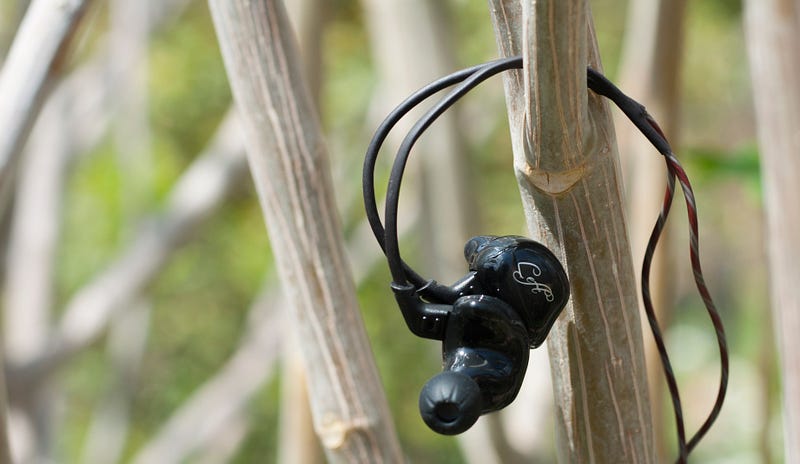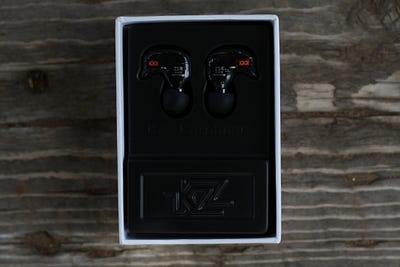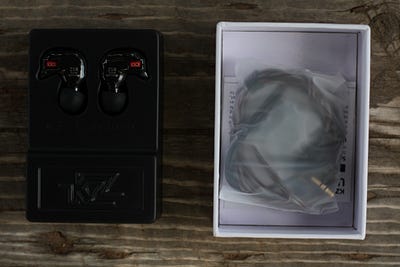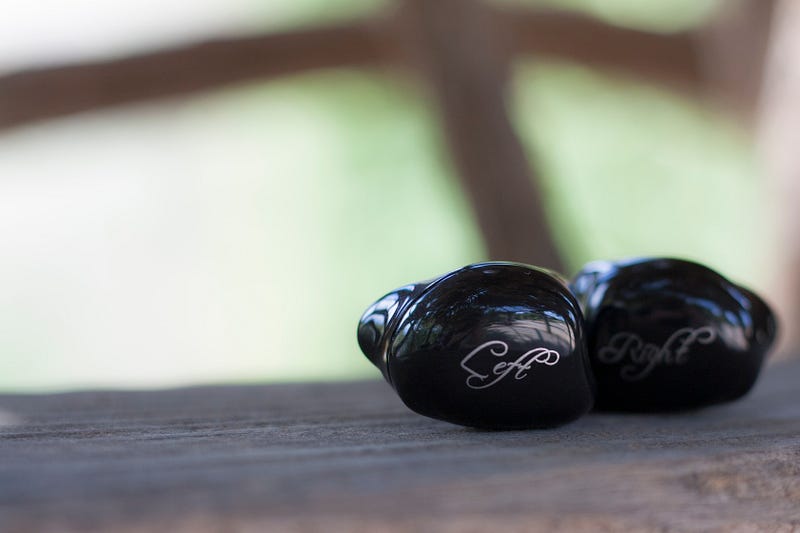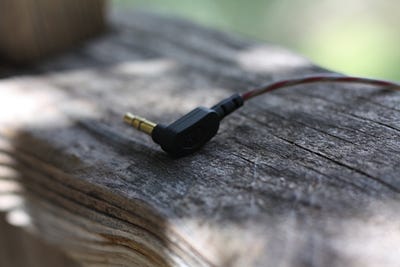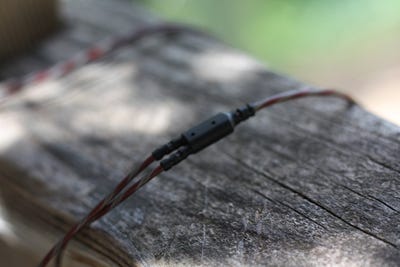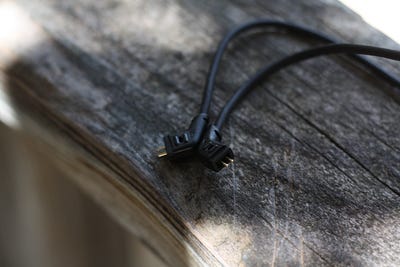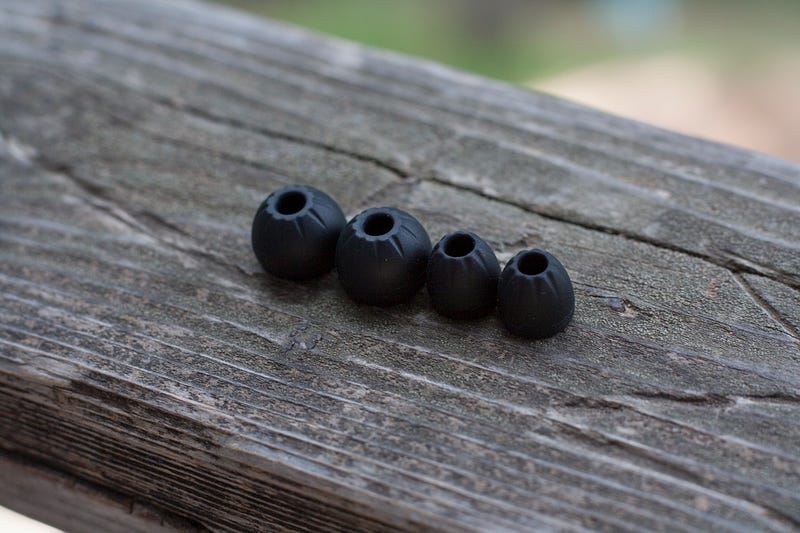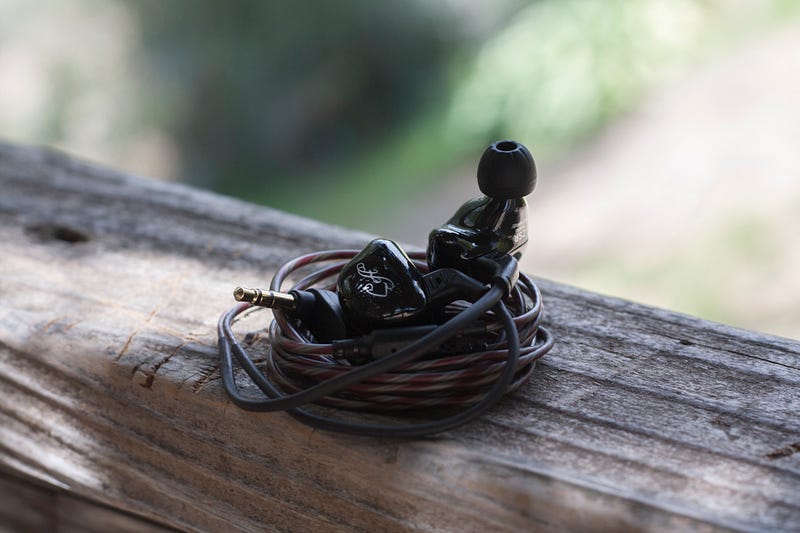Greetings,
Today we're checking out the ZSR, a new hybrid earphone from budget kings Knowledge Zenith (KZ).
Prior to 2016, KZ had not released a single earphone that was using anything other than dynamic drivers. That all changed with the ZST which brought hybrid tech to the masses at a truly affordable price, and it sounded pretty good too. Since the ZST, KZ has gone all out with hybrid models releasing the ZS5, ZS6, and ES3 along with the ZSR and other rumored models on the horizon.
The ZST and ES3 are 1+1 hybrids with one dynamic driver (DD) and one balanced armature (BA) per side. The ZS5 and ZS6 are 2+2 hybrids rolling with two DD and two BAs per side. The ZSR bridges that gap with two BAs and one DD per side. Is it just another hybrid, and just another KZ rolling with the same signature we've heard revised over and over in the ZS and ED series of earphones, or does it do anything different enough to warrant it's existence. Let's find out!
Disclaimer:
I purchased the ZSR from Gearbest for 24.62 CAD during one of their many, many flash sales. I'm not associated with Gearbest, or KZ, or any other entity meaning the thoughts within this review are my own. There was no financial incentive provided to write this review.
Below is a link to the ZSR on Gearbest but as with most KZs you can find them for sale all over the place including Penon Audio, AliExpress, and others:
https://www.gearbest.com/earbud-headphones/pp_1512920.html
Edit: Changed score from 4.5 to 4 stars to reflect thoughts in comparison to the ZS10.
Source:
For at home use the ZSR was powered by a TEAC HA-501 desktop amp or straight out of my Asus FX53V laptop. For portable use it was paired with an LG G5, HiFi E.T. MA8, F.Audio S1, or Shanling M1, all of which brought it up to listening volume without any effort.
Personal Preferences:
I listen primarily to various EDM sub-genres (liquid drum and bass, breakbeat, drumstep, etc.), hip hop, and classic rock. While I enjoy a variety of signatures in my headphones I generally lean towards slightly warm with elevated treble and sub-bass, an even and natural mid-range response, with reduced mid-bass. The HiFiMan RE800, MacaW GT600s, and thinksound On2 offer examples of signatures I enjoy.
Specifications:
- Sensitivity: 107dB / mW
- Impedance: 22 ohm
- Frequency response: 10-40kHz
Packaging and Accessories:
Given their low price and in line with other KZ's you're not getting a ton of stuff for your dollar. The ZSR comes in the same shock-white packaging KZ has been using since moving away from the VSonic inspired boxes they were shipping with early ZST and ZS3 models. It is very clean and simple with a wire frame image of the earphone printed on the exterior sleeve. Side that off and the ear pieces are laid out under a transparent lid and set within a basic plastic tray embossed with the KZ logo.
Lift all that out and you find an instruction manual and some little plastic bags holding the spare ear tips and the removable 0.75mm 2-pin removable cable. In all you get;
- ZSR earphones
- 2-pin cable
- 3 pairs of single-flange silicone tips (s/m/l)
KZ gives you all you need to get going and nothing more. That said, I want to make note that they include their “Starline” tips which are one of my favourite tip options on the market. They're durable, comfortable, and seem to pair well with pretty much everything I throw at them. There's a reason I bought six extra sets back after I first tried them with the ZST.
Build, Comfort, and Isolation:
The ZSR, like the ZS3 before it, has a custom iem inspired design. Whereas the ZS3 which borrowed from StageDiver, the ZSR takes inspiration from iBasso's IT03, though looking closely they've got enough differences to be far from a 1:1 take on each other. Good thing they avoided Campfire Audio this time around or people would have really flipped their $#!&.
The plastics used feel dense and durable, at least as good as the ATR's plastics, and are wonderfully molded without any sloppy lines. The only negative I could find was that on my left ear piece, the two halves of the shell just don't line up quite as well as they should so on the back there's a teeny little ridge that sticks out a fraction of a mm. I doesn't touch my ear or cause any discomfort, but it's there and if you hunt for it, you'll find it. The right ear piece is flawless. While I normally like it when Left and Right indicators are the entire word printed in cursive, admittedly it just doesn't on the ZSR, at least on the version I have in black. I get a feeling it'll look best in the white model that's coming out....eventually...which I will be all over when they're on the market. Lastly, above the nozzle you find printed “ZSR Hybrid Technology”. Everything is printed cleanly and clearly, though I know it'll wipe off eventually.
The openings to the larger than normal nozzles (6mm in diameter) are protected by a very fine metal mesh. There is unfortunately no lip to hold tips on which combined with the massive opening is going to limit options for tip rolling.
The cable is typical KZ; slightly sticky and plenty flexible with good strain relief. It is also saddled with memory wire which I detest. At least KZ does memory wire right, using material that stays in the position you set it. All they need to start including now is a chin cinch and you're good as gold.
Despite the excessive size, the ZSR is actually quite comfortable, rivaling the ZS3 which I liked a lot more at first. The ZS3 sits deeper and more flush with my ear but there's a process to getting a good seal that requires twisting it to the right position. The ZSR slots right into place effortlessly though it doesn't quite disappear the same way the ZS3 does. The ZSR's improved consistency in fit is a big plus in it's favour. The only negative is that memory wire, which is why I swapped out to my original angled ZST cable which uses weights, ala. ATE/ATR instead of memory wire to keep the cable securely around wrapped your ear.
Despite ample ventilation (one vent for the DD and two more at the bottom rear) the ZSR isolates really well. I was quite pleased with how effectively it could block out the sound of vehicles driving by, people chatting next to me while I enjoyed a delicious “high quality” Tim Horton's coffee, and other obnoxious sounds. I'm sure if I bothered to take the time to fit some foam tips, they'd be even better.
In all the ZSR is fairly well constructed, the cable is going to be a “love it” or “hate it” type affair, and isolation is pretty impressive for something so well-ventilated. Comfort should also be good, just keep in mind both the housings and nozzles are larger than average so those with small ears/ear canals be warned.
Sound:
Tips: I really felt no need to move from the stock tips given I like them so much and feel they pair well, but alas, curiosity got the best of me. After swapping through the few tips I have on hand that would fit those beefy nozzles, I settled on those tips from the Auglamour RT-1 and haven't gone back. Not helpful, because I don't think you can buy those tips separately.
In my experience, KZ's hybrids have been mostly composed of a thinner presentation with dazzlingly prominent treble, a recessed or uneven mid-range, and elevated bass. The ZSR is similar to past hybrid offerings from the brand, though with a few much needed alterations. These, in my opinion, make them the most consistent hybrid in KZ's lineup.
The ZSR's treble is elevated, more so than the ZST but less than the ZS6, giving them an energetic and vibrant presentation. Like the ZST, it's peaks seem to roll off before they become overly aggressive or irritating as can be the case with the ZS6. Could just be me though, as I'm not particularly sensitive to treble. My only issue with the ZSR's treble lies with it being slightly loose and with a hint of splashiness, particularly evident with cymbals which lack definition. It's not significant enough to ruin the experience for me though, unlike on older KZ's where this quality was much more prominent.
The ZSR makes some significant steps forward with it's mid-range, bringing in some warmth and thickness lacking on other KZ hybrids. It's quite reminiscent of the classic ANV here actually, though not as prominent. While it is still slightly recessed compared to the treble and bass, it physically sits more forward (closer to action) in the overall presentation which does a good job of masking the minor recession. This is the best of KZ's hybrid bunch when it comes to vocal-centric music to my ears, sounding more natural with both male and female vocals. Instruments seem to have more weight and body to them as well which really helps out with guitars and other instruments.
The low end on the ZSR is reminiscent of the ZS3; slightly mid-bass focused and darkish with good depth and weight. There is a touch of bleed into the lower mids, though throwing on tips with a slightly wider bore negates that. It's more punchy and textured than what you get from the ZS5(v1) but not quite as good as the ZS6. The slightly softer presentation matches well with the detailed upper ranges and full-bodied mid-range, though, and really serves to tie the overall presentation together.
The ZSR's party piece is a round, wide, and deep sound stage that has an airiness to it I've not heard from a KZ since the ANV, nor many other earphones for that matter. They give you a true sense of space with effects skittering off into the distance. Listening to movies with these gives you a true sense of the scale they can portray and makes for a killer experience.
Select Comparisons:
(Volume matching completed via the Dayton Audio iMM-6)
KZ ZS6 (price varies wildly): The ZSR and ZS6 are equals in my opinion, but for different reasons. The ZSR has more low end presence, a larger sound stage, a more natural mid-range with additional warmth and thickness, and overall sounds more even and coherent. The ZS6's technical abilities are a step up with a more layered and well-separated sound with improved imaging accuracy, along with slightly better detail retrieval. The ZS6's low end is slightly more textured too, but it lacks the visceral punch of the ZSR. The ZS6 is also brighter. Not a problem for me, but this may pose issues for others if forums and the comments sections on youtube and Reddit are any indication.
The ZS6 is undoubtedly the better built of the two, looking and feeling much more premium with it's well-crafted aluminum shells. I actually find them equally comfortable, with the ZSR's ear-forming shape making it more conducive for use while active. That said, forming the ZS6's earguides properly keeps them securely in place, so it's almost a wash there too.
Audbos DB-02 (47.99 USD): The DB-02 is a 1+1 hybrid from Audbos, and an earphone you might better know under the brand name Magaosi. I personally find it's wood and aluminum, shallow fit ear pieces gorgeous to look at and extremely comfortable. I suspect they're probably going to sit well with more ears than the ZSR's massive shells. The DB-02's cable is pretty poor; thin, delicate, sticky. KZ's is a big step up imo.
The ZSR's treble is slightly more prominent and with greater extension. The DB-02's mid-range is slightly more prominent and forward, but less organic and slightly dry. The DB-02's low end is punchier and more textured, but it rolls off earlier and lacks sub-bass rumble. The ZSR is more detailed in the treble and mids, has a much larger sound stage and in general it feel it is easily the better sounding and more engaging product.
thinksound ts03+mic (119.99 USD): The ts03 is a single dynamic, wood bodied earphone with a warm, bassy signature. It has a very traditional barrel-shaped housing versus the ZSR's shapely, ear hugging shells which gives the ts03 a more universal fit. I also prefer it's materials which are a mix of wood and aluminum giving the ts03 a simple, but timeless look. The ZSR is not in the same ballpark in terms of visual appeal, to me at least. Neither earphone has a particularly fantastic cable, though I'd take KZ's over thinksounds. It is more flexible, thicker, more memory resistant, and it better relieved.
In terms of sound, the ZSR is notably more treble heavy, but in terms of mids and bass are quite similar. The ts03's bass is tighter, punchier, more textured, but the differences aren't as vast as the price would suggest. The ZSR's presentation is more open and spacious, slightly more visceral, and on the deepest notes gives you more physical feedback. The ts03's mid-range is similarly placed, but given it has a more balanced sound comes across more prominent. I'd say the ZSR's mids are more textured and detailed, but not quite as natural, something the ts03 excels at. In terms of treble, the ZSR is again more detailed. The ts03 is smoother though, lacking the sharpness the ZSR portrays at times.
Final Thoughts:
To my ears, the ZSR is Knowledge Zenith's more successful attempt at a hybrid yet. It's not the most technically adept of the group, a title which probably goes to the ZS6, nor will it likely have the mass appeal of the more relaxed ZST, but upon listening to all their hybrids back-to-back, the ZSR gets my vote because it sounds the most coherent and mature in it's tuning.
If you're in the market for a budget hybrid and were considering one of those from KZ, pending you've got the ears to hold them and are not absurdly sensitive to treble, the ZSR is easy to recommend.
Thanks for reading.
- B9Scrambler
***** ***** ***** ***** *****
Some Test Tunes:
Aesop Rock - Skelethon (Album)
Daft Punk - Random Access Memories (Album)
Elton John - Yellow Golden Brick Road (Album)
King Crimson - Lark's Tongues in Aspic (Album)
King Crimson - Starless and Bible Black (Track)
Supertramp - Crime of the Century (Album)
Infected Mushroom - Converting Vegetarians (Album)
Infected Mushroom - Legend of the Black Shawarma (Album)
Gorillaz - Plastic Beach (Album)
Massive Attack - Mezzanine (Album)
Fleetwood Mac - Rumors (Album)
Run the Jewels - Run the Jewels (Album)
The Prodigy - The Day is My Enemy (Album)
Tobacco - screw*d Up Friends (Album)
Felt - Felt 2 (A Tribute to Lisa Bone) (Album)
